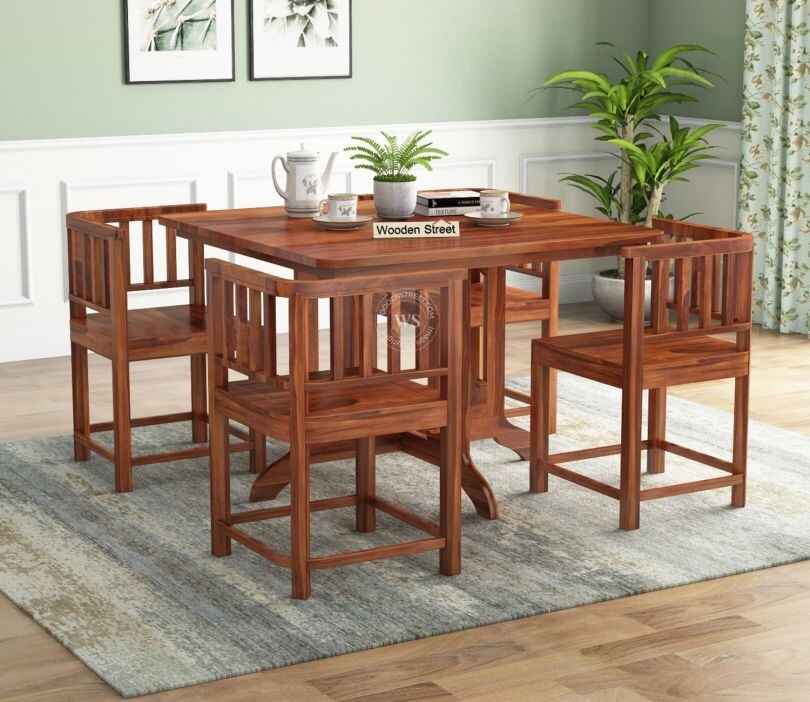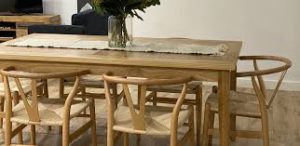Introduction: The Rise of Sustainable Living in Home Design
A few years ago, people picked furniture mostly for looks or comfort. Now, the question has changed. We ask where it comes from? and how it was made? The idea of living responsibly has slowly moved into our homes, and furniture is a big part of it.
Sustainable living isn’t a buzzword anymore. It’s something many of us try to practise every day. We recycle, we avoid plastic, and we care about what we bring inside our houses. Furniture, being a long-term part of every home, naturally became part of that thinking.
Choosing a coffee table for living room or a sofa made from the right materials is no longer about trends. It’s about doing what feels right. Homes that are built thoughtfully have a calmness about them. They don’t just look good; they feel good too.
What Makes Furniture Sustainable
When furniture is called sustainable, it means the maker has thought about the environment at every stage. It begins with the raw materials, moves through the production process, and ends with how long the product will last.
Responsible furniture often uses wood from forests that are replanted or reclaimed from old structures. It can also include bamboo, recycled metal, or rattan. These materials don’t drain natural resources the way plastic or synthetic ones do.
The way a product is made is equally important. Factories that use less water and electricity, avoid harmful chemicals, and create less waste make a big difference. Another simple rule of sustainability is strength furniture that lasts for years is always better for the planet than something that breaks after a season.
If you ever notice small labels like FSC for wood or OEKO-TEX for fabric, they simply show that the piece was made under safe and responsible standards. It’s not about the tag itself but about the honesty it represents.
Materials That Matter
The materials we choose tell a quiet story about how we live. Some of the best options are already around us.
Bamboo grows quickly, needs little care, and doesn’t require replanting. It’s strong, flexible, and fits both modern and traditional interiors.
Reclaimed wood is another smart choice. It comes from old doors, beams, or houses that are being taken down. Instead of wasting that timber, it’s cleaned, treated, and turned into something new. Every mark or grain on it shows a bit of history.
Cork comes from the bark of cork trees and can be harvested without cutting the tree down. It’s soft underfoot, renewable, and has a pleasant natural tone.
Rattan and cane have been used in Indian homes for generations. They are light, breathable, and completely biodegradable. With a little care, they last a long time and age beautifully.
Even recycled metal can be used to make strong frames or bases. What was once scrap can turn into something durable and useful again.
Finishes also matter more than we realize. Paints and polishes that have a strong chemical smell often contain harmful gases. Choosing water-based or natural oil finishes keeps the air inside your home safer.
Fabrics follow the same rule. Upholstery made from cotton, hemp, linen, or recycled fibres feels fresh and is far better for your health than synthetic materials.
The Role of Responsible Brands and Local Craftsmanship
Behind every sustainable piece, there are people who care about what they create. Across India and the world, many small brands and local workshops now focus on mindful making instead of mass production. They use natural materials, pay fair wages, and keep traditional skills alive.
Buying from local craftsmen does more than just support small business. It keeps artistry alive and reduces the pollution caused by shipping goods across long distances. In places like Jodhpur, Jaipur, or Mysuru, entire communities have been working with wood, cane, or metal for decades. Their knowledge and skill give each piece its own character.
Big brands are learning from them too. Many now share exactly how and where their materials are sourced. That transparency helps customers trust what they are buying. When you know who made your furniture, it becomes more personal.
How to Choose Eco-Friendly Furniture for Your Home
Making your home more sustainable doesn’t require a full makeover. It’s mostly about paying attention before you buy.
Start with the material. Look for reclaimed or certified wood, bamboo, rattan, or metal that’s been recycled. If you can, ask the seller about the source. Responsible brands will always be open about it.
Next, pay attention to how solid the furniture feels. Check the joints, the finish, and the overall build. Well-made furniture lasts longer and saves you from buying replacements again and again.

Try to pick designs that do more than one job. A bed with storage drawers or a dining table set that folds away saves space and materials. Owning fewer, better pieces is one of the simplest ways to live sustainably.
Whenever possible, buy from local shops or makers. It reduces shipping waste and supports livelihoods in your area. Plus, handmade pieces often have a warmth that factory-made ones can’t replicate.
Summing up!
A sustainable home is built slowly, one mindful choice at a time. You don’t need to change everything overnight. Start small, maybe a bamboo chair, a reclaimed wood shelf, or a cane lamp. Each addition is a quiet step towards a better way of living.
Eco-friendly furniture proves that good design doesn’t have to harm the planet. It’s practical, simple, and full of life. When you fill your home with pieces made with care, you also bring in a sense of peace that store-bought mass furniture can’t offer.
So, the next time you think of redecorating, pause before you buy. Ask a few questions, choose what feels right, and think long term. Homes built on such choices end up being more personal and more human.
In the end, sustainability isn’t about perfection. It’s about respect for nature, for people, and for the things we decide to keep close.




Be First to Comment